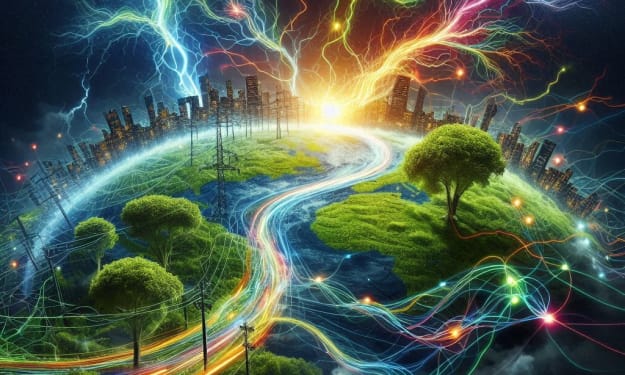
The global climate is changing rapidly compared to pre-industrial times, and there is several evidence that these changes are having an impact on organisms, ecosystems and human systems (high confidence). The increase in global mean surface temperature (GMST) compared to 1850 and 1900, 0, reached between 2006 and 2015 ; the increase in frequency and magnitude of these impacts is very encouraging ; this indicates that a rise in GMST of 1.5 ° C or more will have an impact on natural or human systems, regardless of whether this increase is 1.6 ° C to 2 ° C.
Human-induced global warming is causing several observed changes in the climate system (very high confidence). These changes include an increase in land and sea temperatures and more frequent heat waves in most rural areas (high confidence). Changes caused by global warming include sea level rise due to the melting of polar caps and increase in storms and other severe weather events.
While many people see global warming and climate change as synonyms, scientists use climate change to describe the complex changes affecting the planet's climate and the weather system where parts of some areas are cooling short-term. Climate change includes not only rising average temperatures and extreme weather events, but also changes in wildlife populations and habitats, rising seas and a variety of other impacts. We call the findings global warming because they cause a number of changes in Earth's climate and long-term weather patterns that vary from place to place.
These changes come to light as man continues to add heat-trapping greenhouse gases to the atmosphere, thereby changing the rhythm of the climate on which living beings now rely. As the earth gradually warms, many species deal with it by altering or destroying habitats, reducing food sources, causing droughts, and other species being damaged by severe weather events that can kill species that cannot withstand the heat.
Indeed, scientists predict that more than one-third of the world's animal and plant species will be threatened with extinction by 2050 and 70% by the end of the century if we continue on our current course in greenhouse gas emissions. If we are unable to reduce our emissions, scientists believe that climate change could kill around 250,000 people around the world each year and move 100 million people into poverty by 2030.
Under the administration of President Donald Trump, a man who called global warming a "hoax," the United States withdrew from the Paris Climate Agreement, withdrew or eliminated dozens of clean air protections, and opened government-owned lands to fossil fuel development, including sacred national monuments. Since President Biden promised to get the country back on track after years of inaction under the Trump administration after years of inaction, our better understanding of global warming and its serious effects means that we must accelerate our efforts to reduce greenhouse gases emissions.
The changes in Earth's climate that have been observed since the early twentieth century are largely due to human activities, particularly the burning of fossil fuels which have increased the greenhouse gas heat-trapping in the Earth's atmosphere and increased the average surface temperature of the planet. The Earth has been warming and cooling for tens of thousands of years, but human activity over the past 200 years has driven the rapid warming that has occurred.
Excess heat energy in the atmosphere and oceans has contributed to changes in the sea level rise, changes in precipitation patterns and changes in the life cycle of many plants and animals. Excess heat energy from the atmosphere has caused the global average temperature to increase excessively, known as global warming. Human activities were the main driver of the global temperature rise during the industrial age, with natural forces providing additional variability.
A temperature increase of 2 degrees Celsius compared to preindustrial times is associated with serious negative impacts on the natural environment, as well as human health and well-being, including a higher risk of dangerous and catastrophic changes in the global environment.
Global warming due to anthropogenic greenhouse gas emissions is already impacting the North Atlantic THC through changes in temperature, precipitation, melt and water circulation. The presence of abrupt climate changes in the past due to THC changes has fuelled concern about the possibility of triggering similar changes in the future. The models differ in their predictions of weakening or switching off of THC due to future anthropogenic climate change (Solomon et al., 2007).
Various scientists, politicians and media professionals use the terms "climate crisis" and "climate emergency" to talk about climate change, with global warming and global warming interchangeable. Before the 1980 "s, it was unclear whether warming was dominated by greenhouse gases or aerosols cooled, and scientists used the term inadvertent climate change to indicate human impact on the climate. In 1980 the terms global warming and climate change were introduced. Global warming refers to increased surface warming while climate change describes the full effect of greenhouse gases on climate.
Global warming is the long-term warming of the Earth's climate system observed since the preindustrial period (1850-1900) due to human activities (burning fossil fuels) that increased the heat absorption of greenhouse gases in the atmosphere. It is often used interchangeably with the term climate change, but the latter refers to man-made warming and not to the effects of man-made warming on the earth. Global warming is measured as the average increase in global surface temperature on Earth.
Studies on the effects of increasing concentrations of carbon dioxide in the Earth's atmosphere on plant life A summary of the role of greenhouse gases in changing the Earth's climate.
Since the middle of the 20th century, climate scientists have collected detailed observations of various weather phenomena such as temperature, precipitation and storms as well as related influences on climate such as ocean currents and the chemical composition of the atmosphere. In response to a request from the US Congress, the US National Academy of Sciences published a series of peer-reviewed reports called Americas Climate Choices, which provides authoritative analysis to inform and guide nations'response to climate change. Global warming is the phenomenon of an increase in the average air temperature at the Earth's surface over the last century or two.
The transition to non-greenhouse gas-based energy sources such as solar, wind, biofuels and nuclear could slow the pace of climate change, but these technologies face hurdles ranging from debates about production capacity to the actual installation of plants. This is a relevant question for a report by the US National Academy of Sciences entitled Limiting the magnitude of the future climate change, which explains how policy measures can be taken to slow or reverse the global warming.
About the Creator
Enjoyed the story? Support the Creator.
Subscribe for free to receive all their stories in your feed. You could also pledge your support or give them a one-off tip, letting them know you appreciate their work.






Comments
There are no comments for this story
Be the first to respond and start the conversation.